Komodo isn’t just a destination, it’s a rite of passage for anyone with salt in their blood and a thirst for the unknown. Nestled in Indonesia’s Lesser Sunda Islands, the Komodo National Park is one of the only places on Earth where wild Komodo dragons roam freely, across Komodo, Rinca, Gili Motang, and parts of Flores Island.
They may be called dragons, but no, they don’t breathe fire. Out at up to 3 meters long with serrated teeth and a venom-laced bite, they’re as close as nature gets to the legends.
And yet, the park is not just about these predators.
It’s about slipping beneath the current-ripped surface and discovering coral kingdoms bursting with life. It’s about wind-whipped summits, sunburned freedom, and seas that pulse with wild energy.
For divers, Komodo isn’t just bucket-list-worthy. It’s church.
This guide brings you the raw truth and the real beauty: both the gritty logistics and the unforgettable moments. If you’re serious about Komodo, this is your map. Read on!
Understanding Komodo National Park
Geography and Composition: Islands and Marine Areas
Komodo National Park sprawls across 29 volcanic islands and covers over 1,800 square kilometers of wild, unfiltered Indonesia. The big players, Komodo, Rinca, and Padar should be the main attention.
But the marine area? That’s where Komodo flexes. The currents here rip between deep channels, ferrying nutrients that supercharge the biodiversity.
It’s chaos and beauty, perfectly balanced.
UNESCO World Heritage Status and Its Significance
In 1991, UNESCO recognized Komodo for both its terrestrial and marine biodiversity. The park’s unique combo of endangered species, especially the Komodo dragon, and its vibrant underwater world makes it globally significant.
But that tag also means rules, responsibilities, and ongoing conservation battles against illegal fishing, coral damage, and climate change.
Cultural Heritage
Long before the dragons got famous, the Ata Modo people lived alongside them, weaving folklore and coexistence into everyday life. Their customs and oral traditions are as integral to Komodo’s story as the jagged peaks and tidal surges.
Planning Your Visit
Best Time to Visit
Komodo has two main seasons: the wet season from January to March, and the dry season from April to November. During the wet months, heavy rains and rough seas make diving tough, many sites close, and liveaboards pause operations. Come April, things shift. Clear skies and calm waters return, bringing vibrant reefs and incredible marine life.
June and July are the peak time to visit: perfect weather, crystal-clear water, and active wildlife both above and below the surface. It’s when Komodo truly shines.
How to Get There
Labuan Bajo on Flores Island is your gateway. Daily flights from Bali (Denpasar) make it easy, and there are now limited international flights directly into Labuan Bajo (LBJ) as well making it more accessible than ever. From there, it’s boat time: day trips or multi-day liveaboards set sail straight from the harbor. Head to our How to Get to Komodo guide for more detailed info.
Accommodation Options
Staying in Labuan Bajo
Labuan Bajo has transformed from sleepy fishing village to bustling dive hub. You’ll find everything from budget bunkhouses to boutique eco-resorts. Want rooftop cocktails after a dive day? Got it. Prefer local warungs and a hammock under a palm tree? Also doable.
Liveaboard: What to Expect
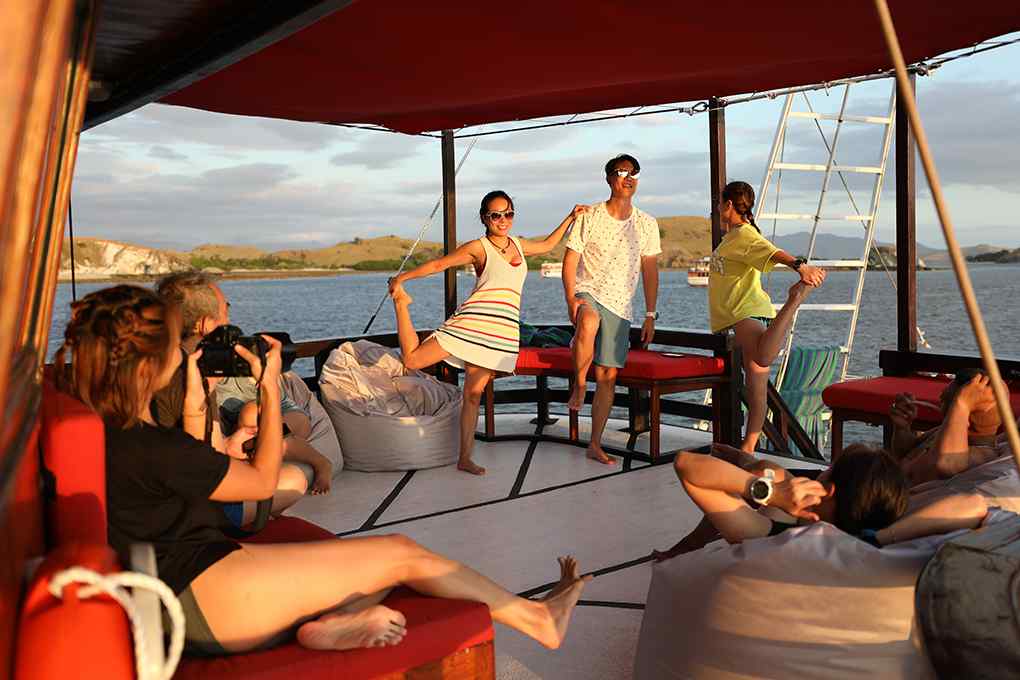
Liveaboards are the ultimate way to explore Komodo’s dive sites and remote islands. Think floating hotels with dive decks, sun loungers, and onboard chefs whipping up sambal-laced meals between dives. From basic backpacker setups to luxury yachts with hot tubs and wine cellars—there’s a boat for every kind of diver.
Exploring the Park
Tour Types: Day Trips vs. Multi-Day Excursions
| Feature | Day Trips | Multi-Day Excursions (Liveaboards) |
| Duration | 1 full day (early start, late return) | 3–8 days (overnight onboard) |
| Access to Dive Sites | Limited to closer or popular locations | Includes remote, high-value dive sites |
| Crowd Levels | Often crowded at key sites | Fewer boats, early access before crowds |
| Comfort & Convenience | Basic amenities, return to Labuan Bajo daily | All-inclusive: meals, cabins, dive gear onboard |
| Experience Level | Good for beginners or casual snorkelers | Ideal for serious divers and adventurers |
| Wildlife Encounters | Limited time for sightings | Extended time increases chances of seeing more |
| Itinerary Flexibility | Fixed routes, tight schedules | Flexible diving/tour plans based on conditions |
| Topside Attractions | Padar, Komodo/Rinca, Pink Beach (brief visits) | Includes hikes, sunsets, beach time, and more |
| Overall Experience | Quick taste of Komodo highlights | Full immersion in Komodo’s land & sea beauty |
Day trips are fast and convenient. You’ll hit the big names like Padar Island, Komodo or Rinca, Pink Beach, and maybe snorkel with manta rays. It’s a good option if you’re short on time. But it’s a long day, often rushed, with early starts, shared boats, and tight schedules.
Liveaboards, on the other hand, are the real way to dive into Komodo. You sleep on the boat, wake up at remote islands, and dive before the crowds arrive. Everything’s taken care of: meals, gear, routes, and you get access to far-off sites that daytrips can’t reach. It’s slower, more immersive, and honestly, unforgettable.
If you want to really feel Komodo, to live it, not just see it, go liveaboard. It’s not just a tour. It’s the adventure.
Choosing the Right Tour Operator: What to Look For
Don’t just go with the cheapest. Check safety records, environmental practices, and guide credentials. Look for PADI or SSI dive operators with local staff and solid reviews. Good operators brief you like pros and don’t chase mantas with jet skis. Check our customer reviews to check our track records.
La Galigo’s Signature Komodo Itineraries: Jurassic vs. Ultimate
La Galigo Liveaboard offers two unforgettable ways to dive deep into Komodo National Park: Jurassic Komodo and Ultimate Komodo. Both trips are designed for divers who want more than just a quick look: they’re about full immersion, both underwater and topside.
Jurassic Komodo is a 6-day, 5-night adventure that packs serious punch. You’ll do up to 16 dives at iconic sites like Castle Rock, Crystal Rock, and Golden Passage. There’s also time for dragon trekking on Rinca, a sunset hike on Gili Lawa Darat, and watching thousands of fruit bats take flight over the sea at dusk. It’s the perfect trip if you’re short on time but still want the full Komodo experience.
Ultimate Komodo is an 8-day, 7-night expedition for those who want to go all-in. You’ll explore even more legendary dive sites, including Batu Bolong, Manta Alley, and The Cauldron. This trip also includes a hike up Padar Island for its famous panoramic view and a visit to the stunning Pink Beach. With more days, more dives, and more remote beauty, it’s Komodo in high definition.
Wildlife Encounters
Komodo Dragons: Behavior, Habitat, and Safety Tips
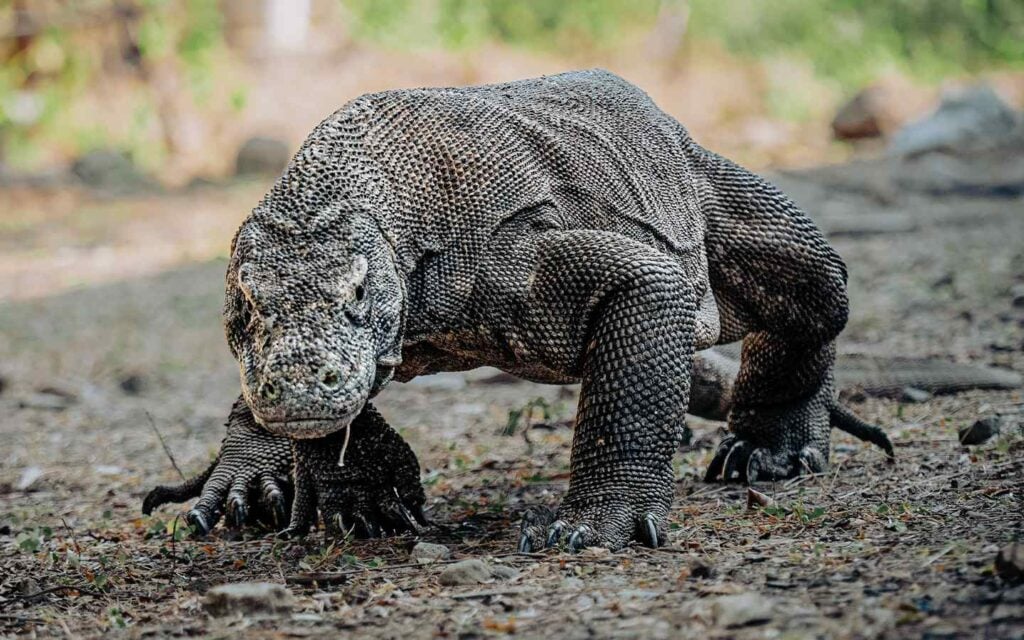
Ancient, apex, and can kill with a single bite. Komodo Dragons are solitary hunters with a taste for deer and surprise ambushes. Stick with your guide, keep your distance, and never turn your back.
Other Terrestrial Wildlife: Deer, Wild Boars, and Birds
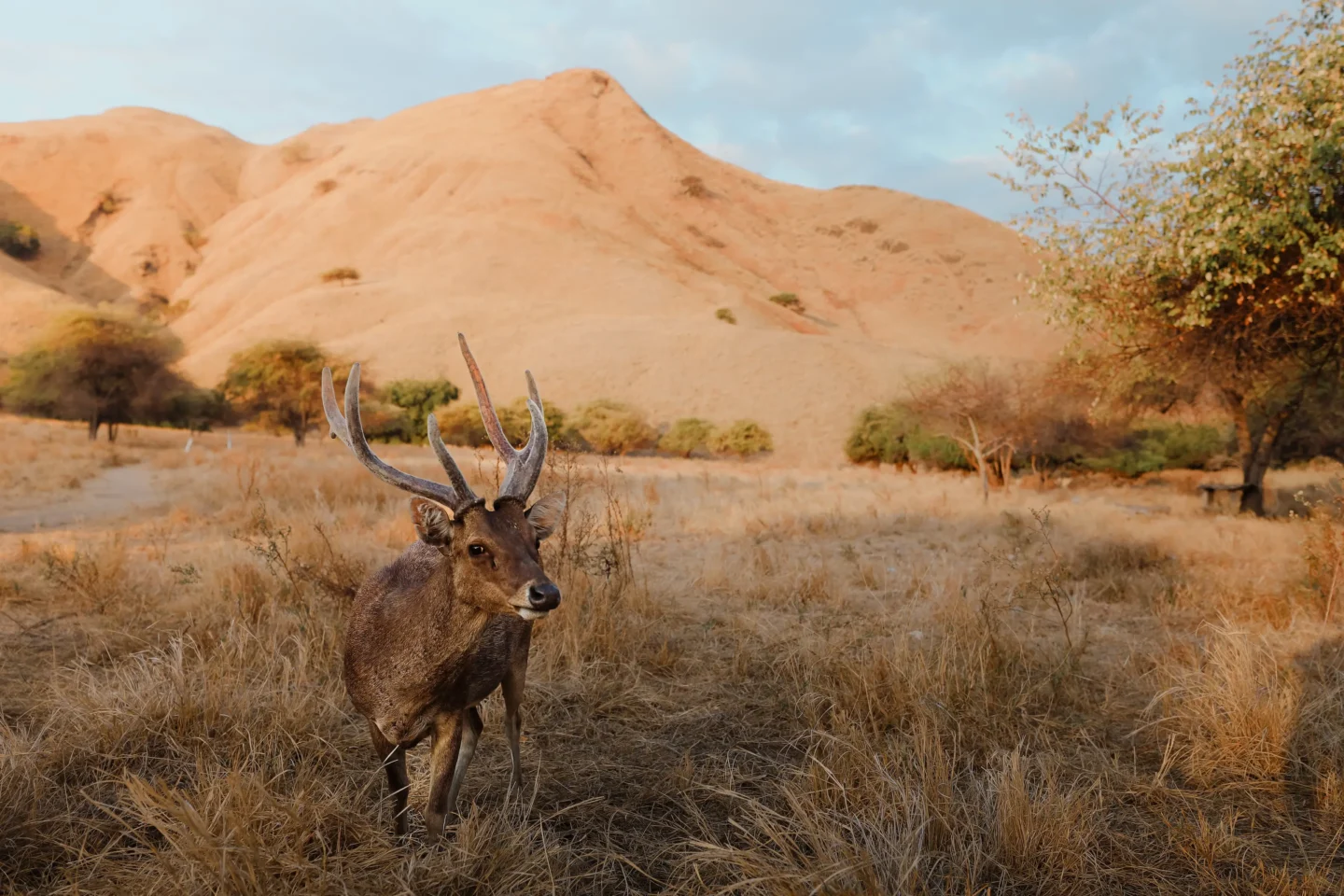
Though not as famous, Komodo Dragons aren’t the only wildlife in the National Park. You’ll spot Timor deer, wild boars, macaques, and frigatebirds. Birders will geek out over the diversity. Photographers, keep your shutter fingers ready.
Marine Life: Manta Rays, Turtles, and Coral Reefs
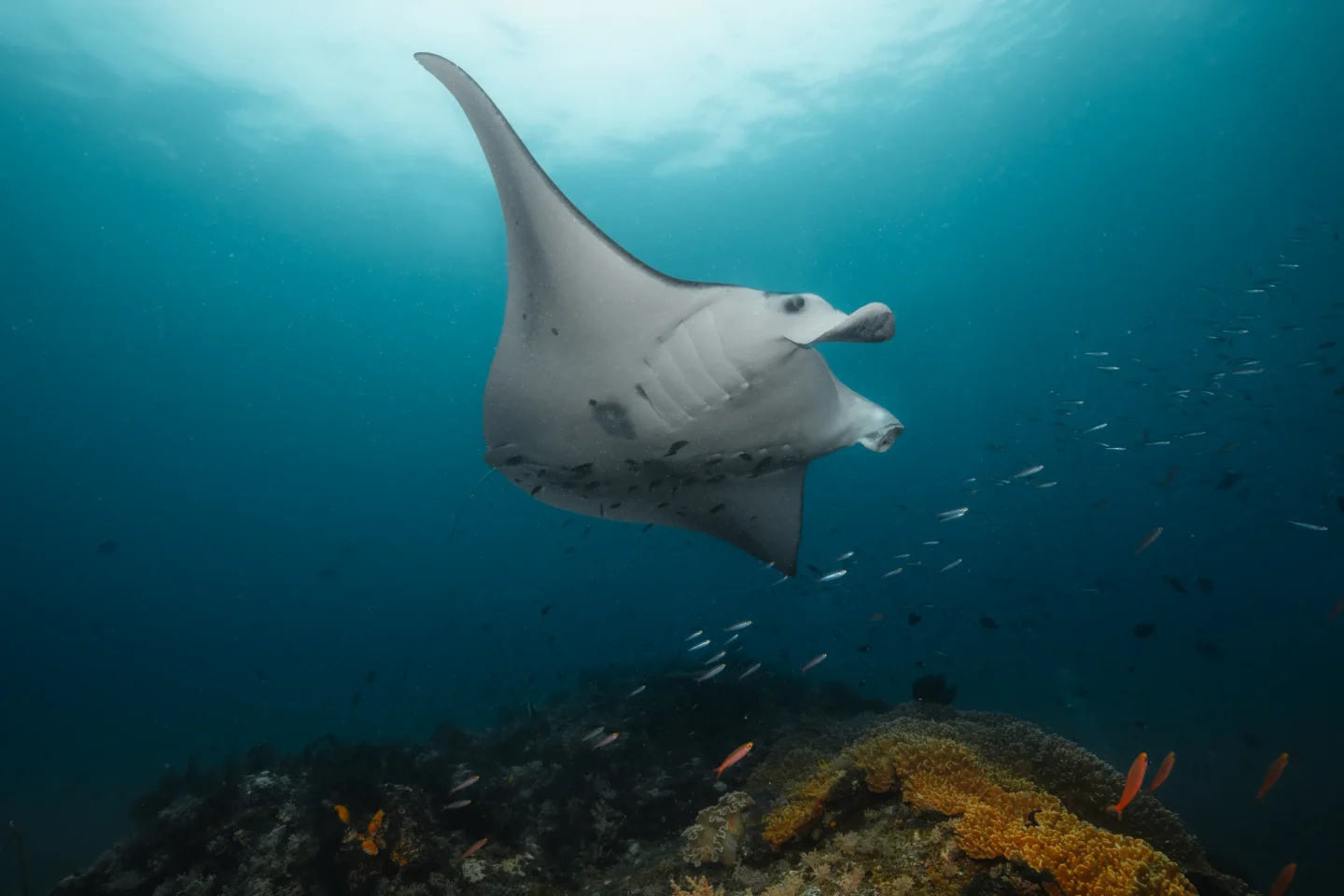
This is what divers dream about. Giant mantas swoop in with interstellar grace. Hawksbill turtles glide through technicolor reefs. Reef sharks patrol the channels, and nudibranchs add pops of neon. The coral gardens of Tatawa Besar and Batu Bolong are jaw-dropping. We have curated the top 9 Species to Spot in Komodo Island.
Must-Visit Spots in Komodo National Park
| Spot | Main Attraction | Activities | Accessibility | Best Time to Visit |
| Padar Island | Iconic panoramic viewpoint with three-colored bays | Hiking, photography | Moderate hike (30–45 min) | Sunrise or late afternoon |
| Pink Beach | Rare pink-hued sand from crushed coral | Snorkeling, swimming, relaxing | Easy beach access | Midday for best colors |
| Manta Point | Cleaning station for giant manta rays | Snorkeling, diving | Accessible by boat | Dry season (May–September) |
| Taka Makassar | Shallow sandbar in turquoise water | Snorkeling, sunbathing | Short boat ride, tidal dependent | Low tide during dry season |
| Rinca Island | High chance of Komodo dragon sightings | Guided treks, wildlife viewing | Ranger-led hikes | Late afternoon |
Padar Island: The Iconic Viewpoint
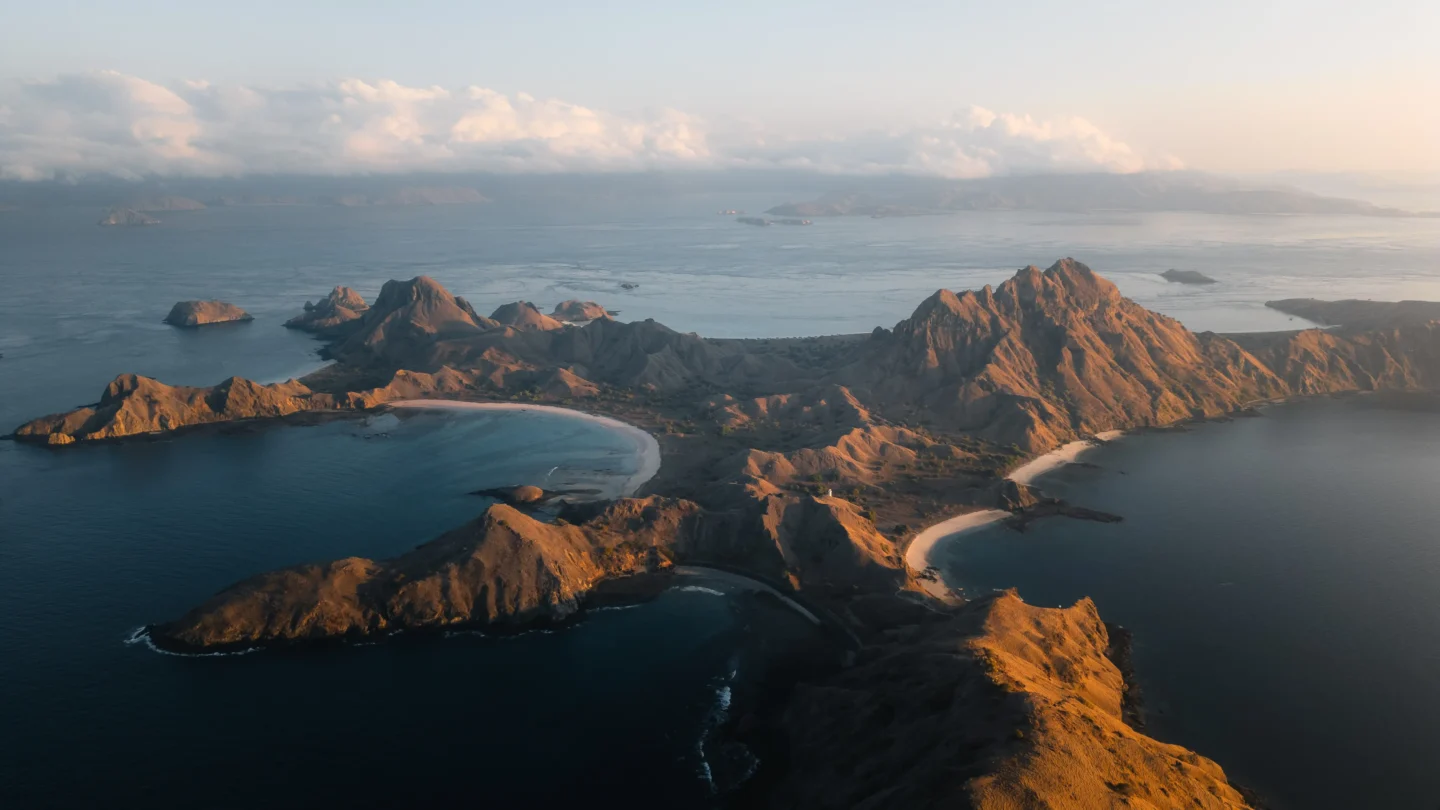
That ridgeline shot you’ve seen on Instagram? That’s Padar Island. A sweaty 30-minute hike gets you to the panoramic payoff: three crescent beaches in different hues, surrounded by jagged peaks and open sea. Go at sunrise—fewer crowds, better light.
Pink Beach: Nature’s Unique Phenomenon
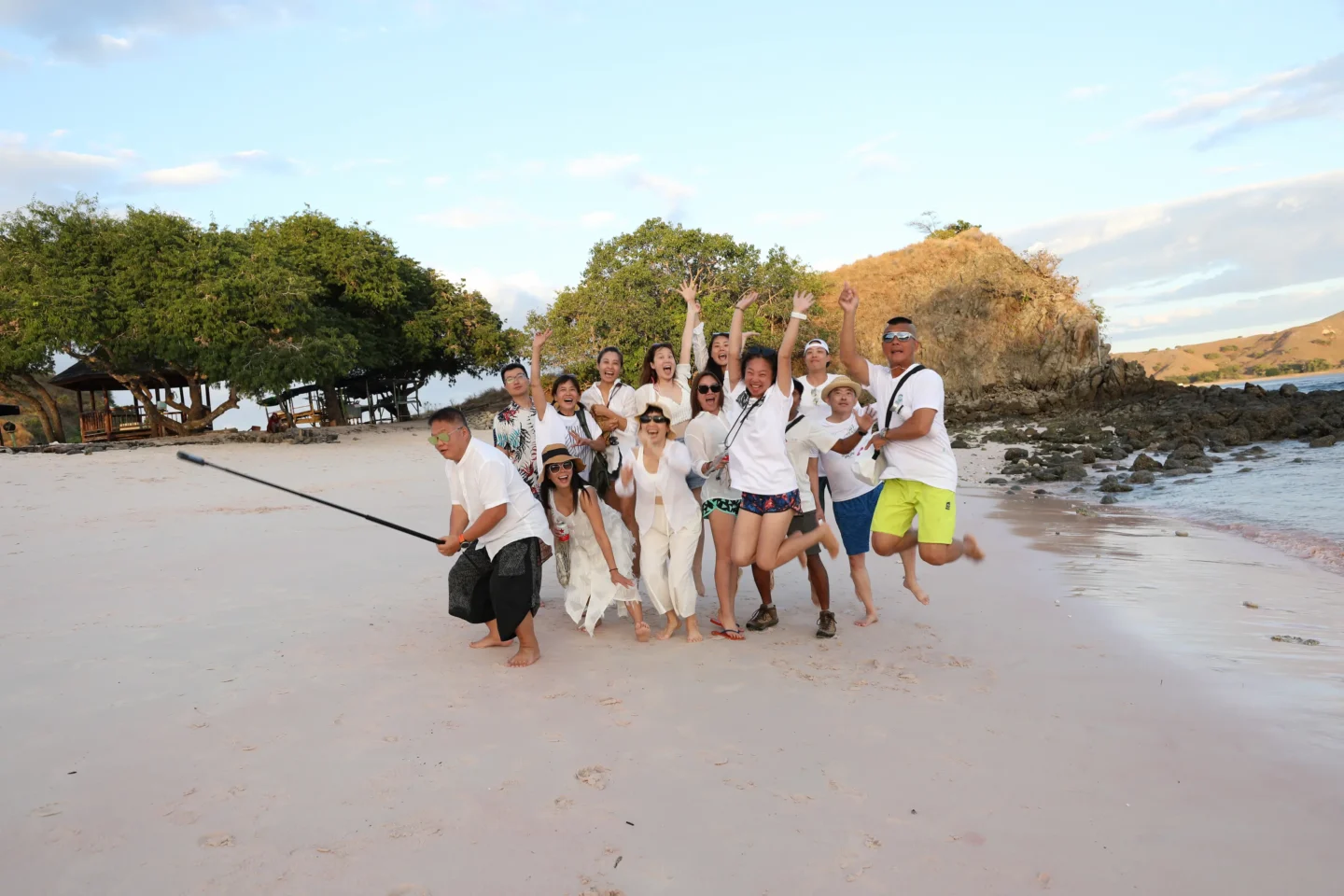
Pink beach has this crushed red coral meets white sand, and pink sand magic. Snorkel off the shore and you’ll find healthy reefs just meters from the beach. But skip the sunscreen unless it’s reef-safe.
Manta Point and Taka Makassar: Snorkeling Highlights
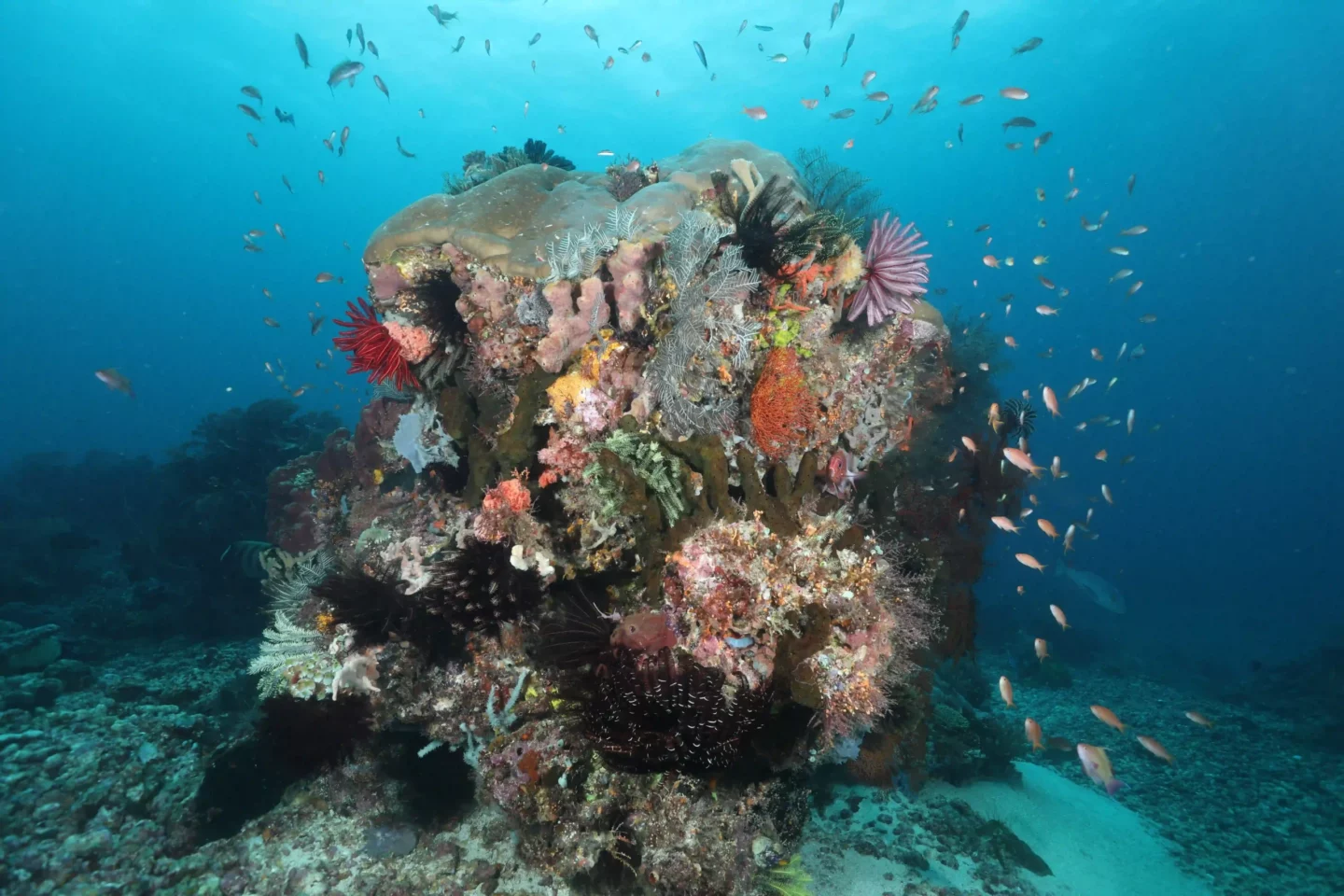
Snorkelers rejoice, these spots aren’t just for divers. Mantas cruise the shallow cleaning stations, and Taka Makassar offers an endless sandbar surrounded by turquoise. It feels like walking on water.
Rinca Island: A Less-Crowded Alternative to Komodo Island
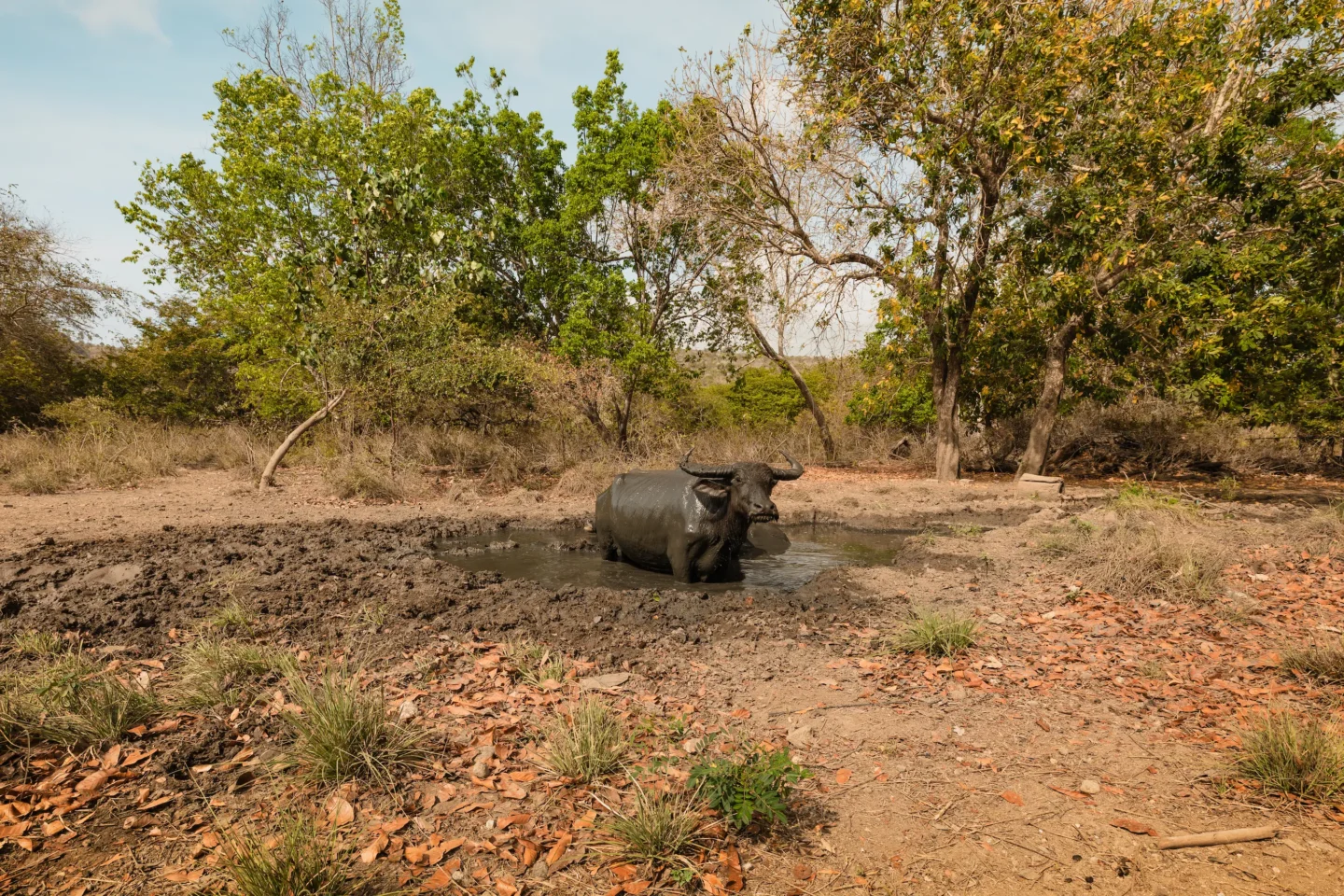
Fewer tourists, more dragons. Rinca island offers a rawer, less polished experience. The rangers here are seasoned, and you’re more likely to spot dragons in the wild rather than near the ranger station.
Activities and Adventures
Diving and Snorkeling: Top Sites and What You’ll See
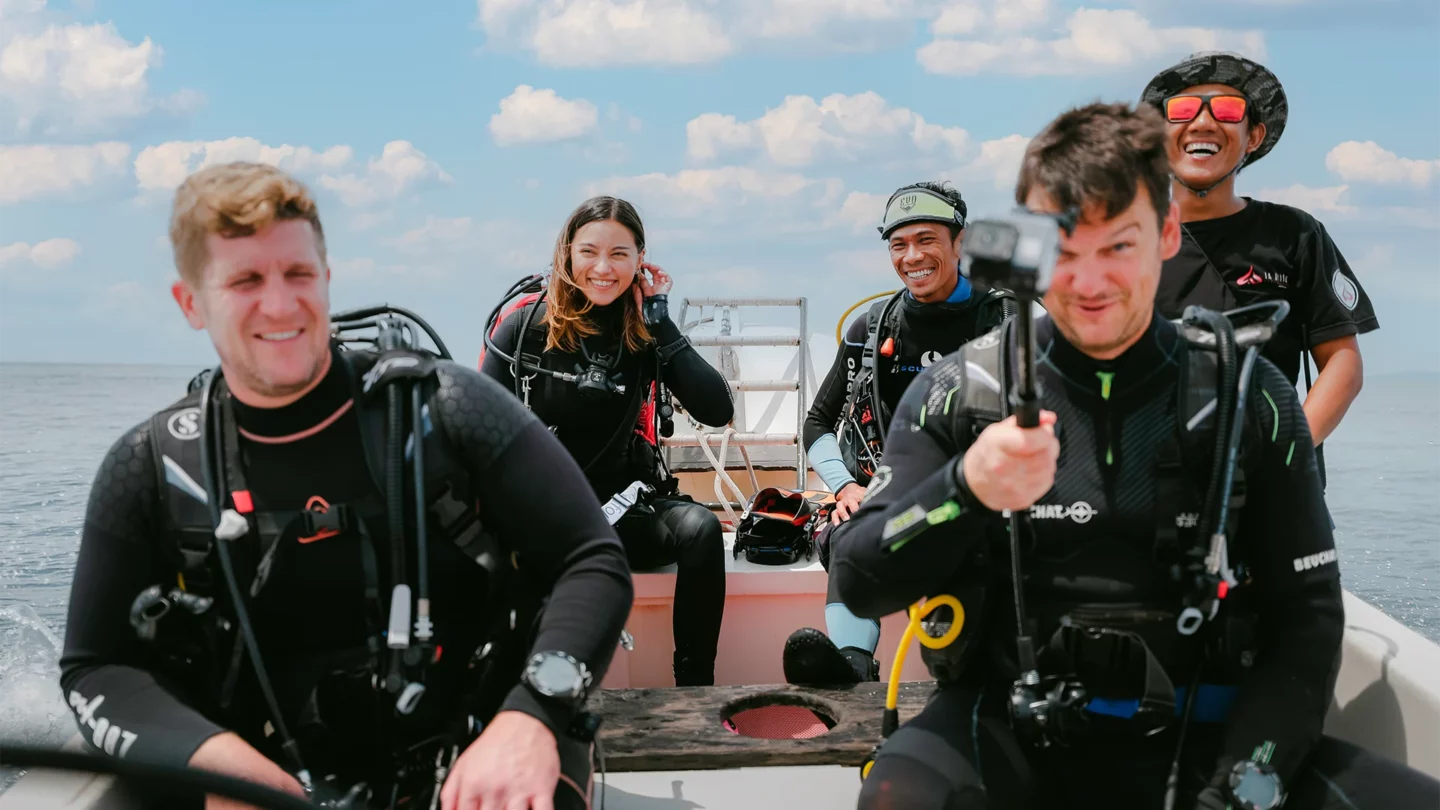
Komodo is elite diving. Some of the best dive sites are The Cauldron, Castle Rock, Crystal Rock and Golden Passage. These sites serve up big pelagics, current-fed coral walls, and surreal visibility. Even snorkelers get front-row seats to the underwater carnival.
Related: 11 Best Spots in Komodo Island to Dive and Snorkel
Hiking Trails: Difficulty Levels and Scenic Routes
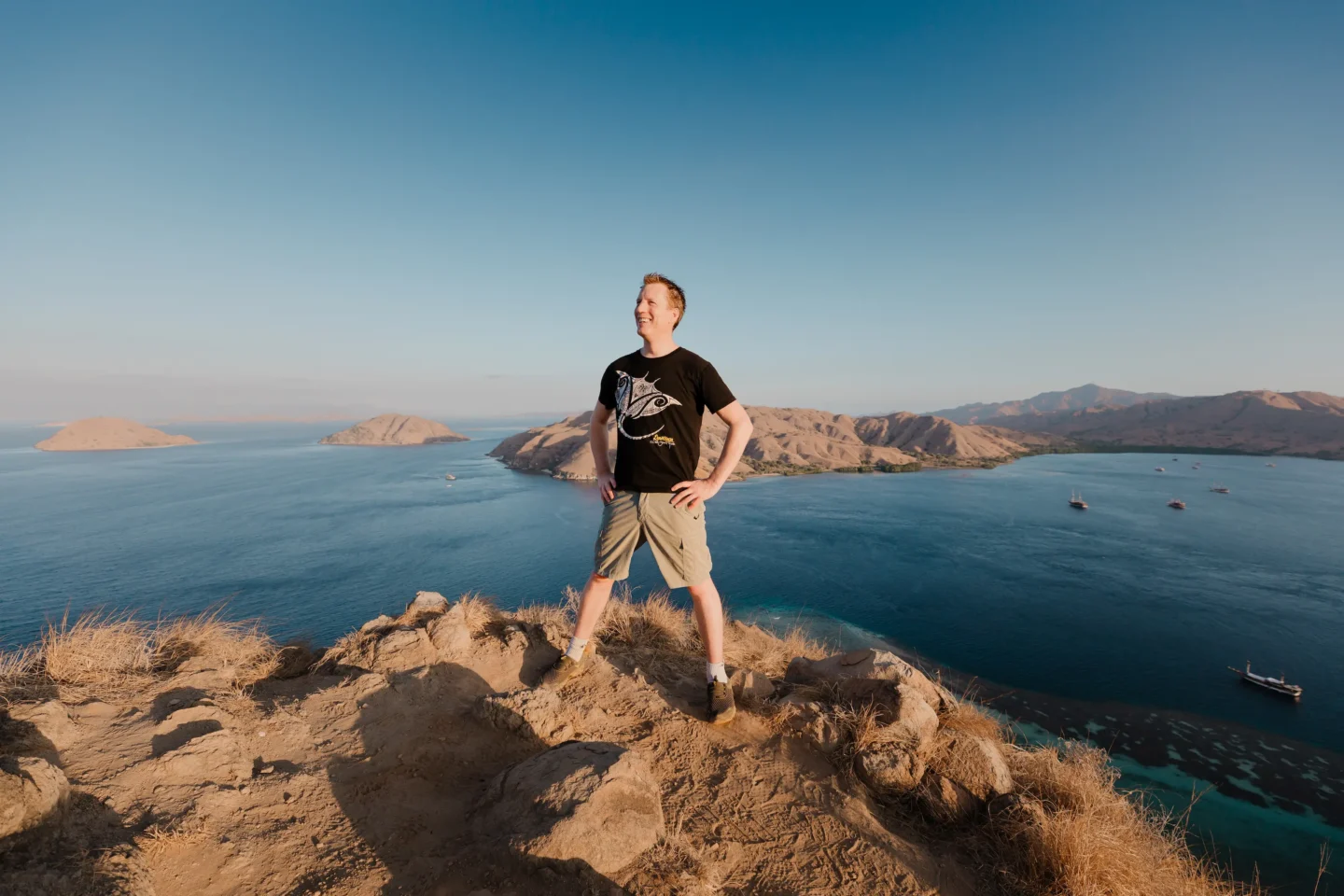
Trails vary from gentle beach walks to thigh-burning climbs. Padar’s the classic, but Gili Lawa Darat and Rinca offer scenic routes without the foot traffic. Good shoes, water, and a sense of wonder required.
Kayaking and Paddleboarding: Exploring the Waters
Paddle through mangroves, over coral beds, and into hidden coves. Early morning or sunset is best, when the water’s glassy and the silence is only broken by birdsong and your own breath.
Related: Top Activities To Do in Komodo Island: Dragons, Diving & Day Trips
Food and Dining
Local Cuisine: What to Try in Labuan Bajo
Get the grilled fish, eat the sambal, drink the arak (cautiously). Try ikan bakar (charcoal-grilled fish), gado-gado, and spicy squid stews. The seafood is fresh off the boat and the flavors hit hard.
Dining on Liveaboards: Meal Plans and Options
Expect family-style meals with Indonesian staples: nasi goreng, sate, tempe, and fresh fruit. Our liveaboard caters to Western tastes too with both oriental and western offerings at every mealtime, but the best meals mix both worlds: tropical ingredients, comfort food soul.
Special Dietary Needs: What’s Available
Vegan? Gluten-free? Halal? Most operators can accommodate if you give notice (We could too).
Photography Tips in Komodo
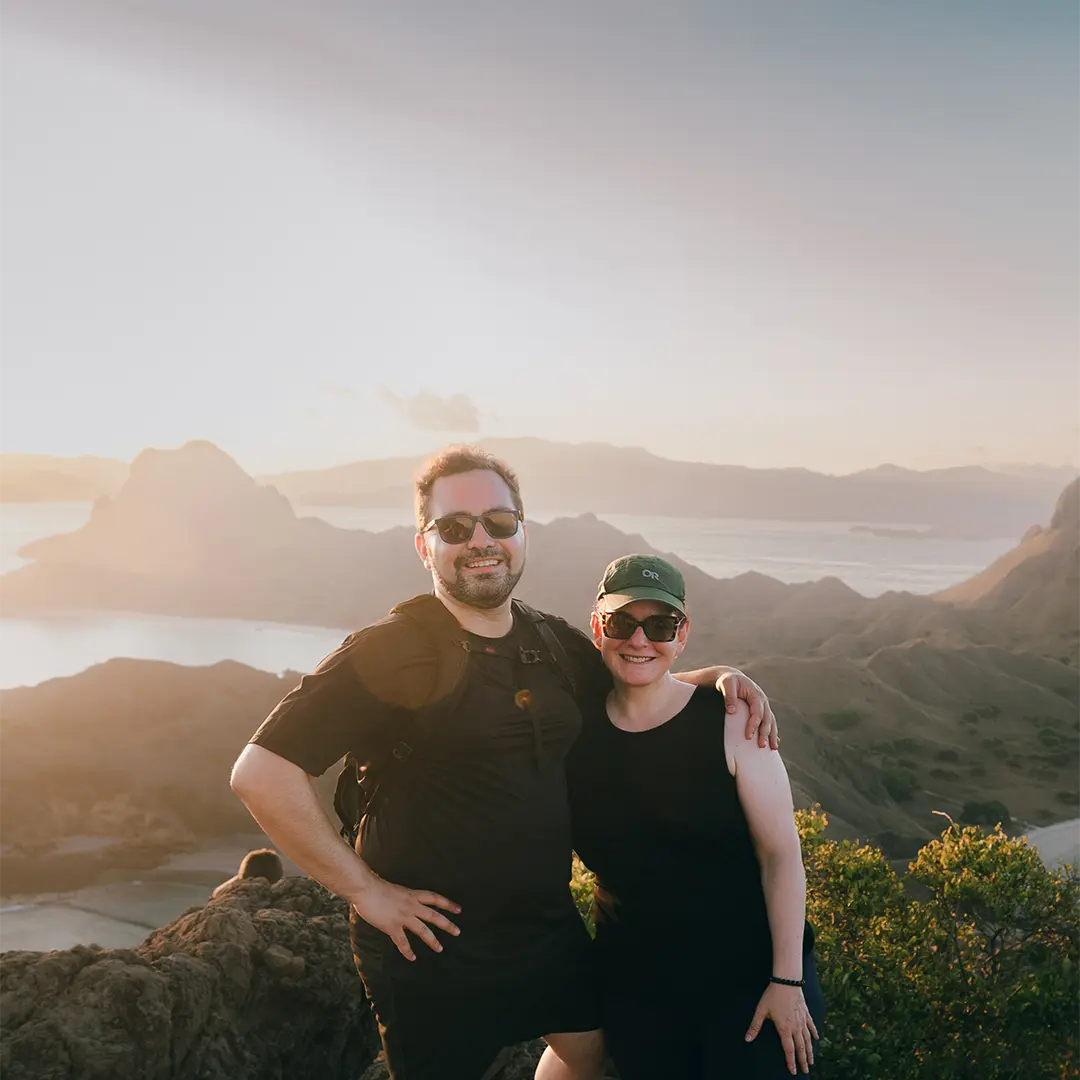
Capturing Wildlife: Best Practices
Long lenses for dragons, patience for birds, and respect always. Never bait animals. Stay quiet, keep your distance, and let the wild come to you.
Landscape Photography: Sunrise and Sunset Spots
Padar at dawn. Gili Lawa at dusk. The deck of a liveaboard as the sun melts behind distant peaks. Use a polarizer to cut glare, and a drone for that wide Komodo sprawl.
Underwater Photography: Gear and Techniques
Go wide for manta shots, macro for nudibranchs. Use strobes for color pop. Please practice buoyancy! We don’t want your photo op to end in a coral casualty.
Tips from our photographer, Ewo: use Log profile for video and RAW profile for photo especially for underwater shots to maximize the post productions result as you can color correct as natural as possible.
Conservation and Sustainability
Ongoing Conservation Efforts in the Park
From coral restoration to anti-poaching patrols, conservation is constant here. NGOs and dive operators partner to monitor reefs, tag mantas, and educate tourists.
How Tourism Impacts the Ecosystem
Too many boats, careless divers, plastic waste. It all adds up. The park has seen strain, but responsible tourism can turn the tide.
Responsible Travel: How You Can Help
Use reef-safe sunscreen, don’t touch coral, and support eco-conscious operators. Tip local staff fairly. And for the love of the ocean, pack out your trash.
Practical Tips
What to Pack: Essentials for Land and Sea
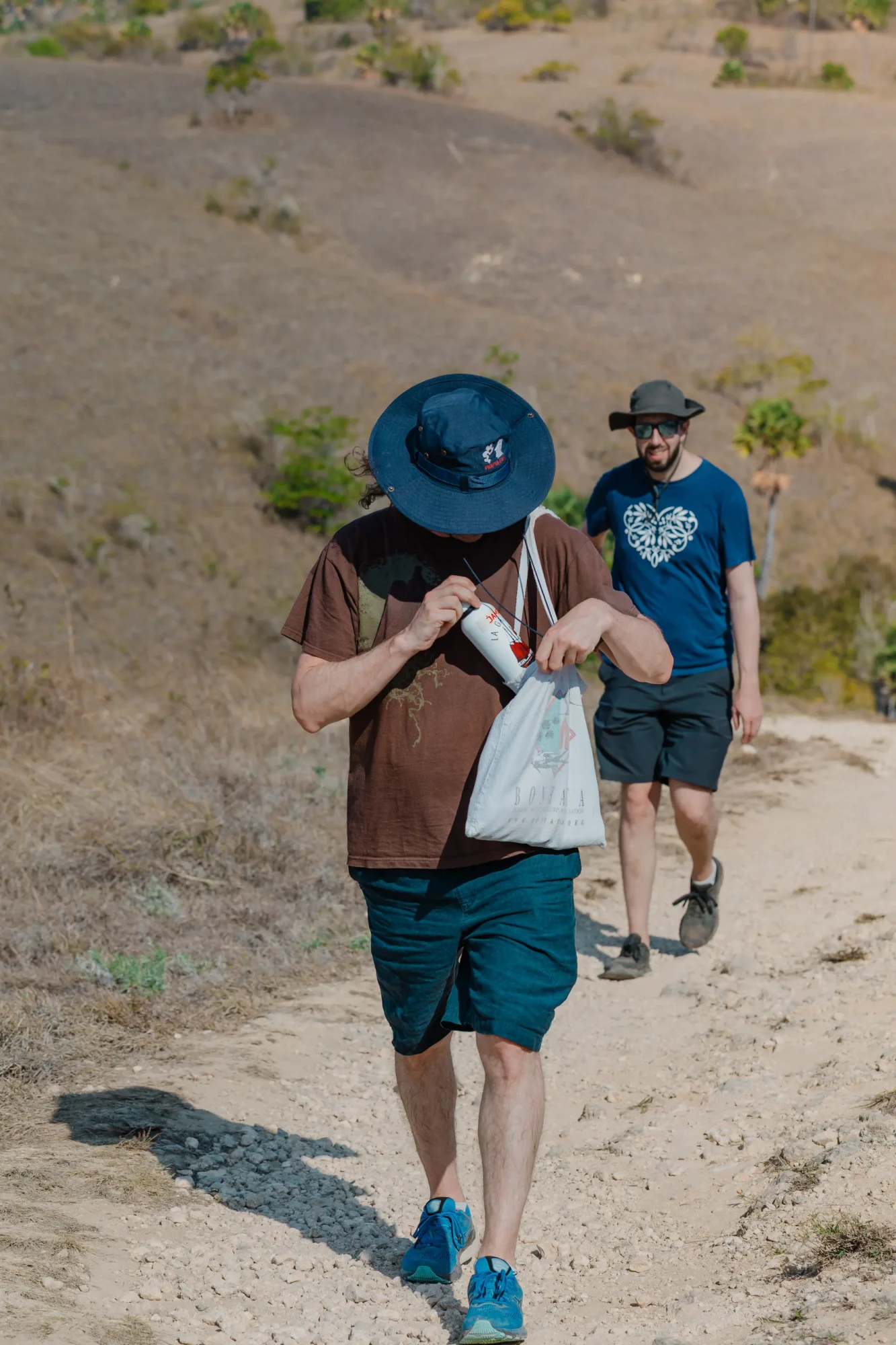
Dry bags, reef-safe sunscreen, a good mask, rash guard, trekking shoes, and a power bank.
| Category | Essentials |
| Dive Gear | Mask, snorkel, fins, wetsuit (3mm), dive computer |
| Clothing | Rash guard, swimsuit, trekking shoes, hat |
| Tech | Power bank, camera, dry bag, GoPro |
| Health | Reef-safe sunscreen, motion sickness pills, personal meds |
| Extras | Sarong, earplugs, headlamp |
Related: Scuba Diving Liveaboard Checklist
Connectivity: Internet and Mobile Coverage
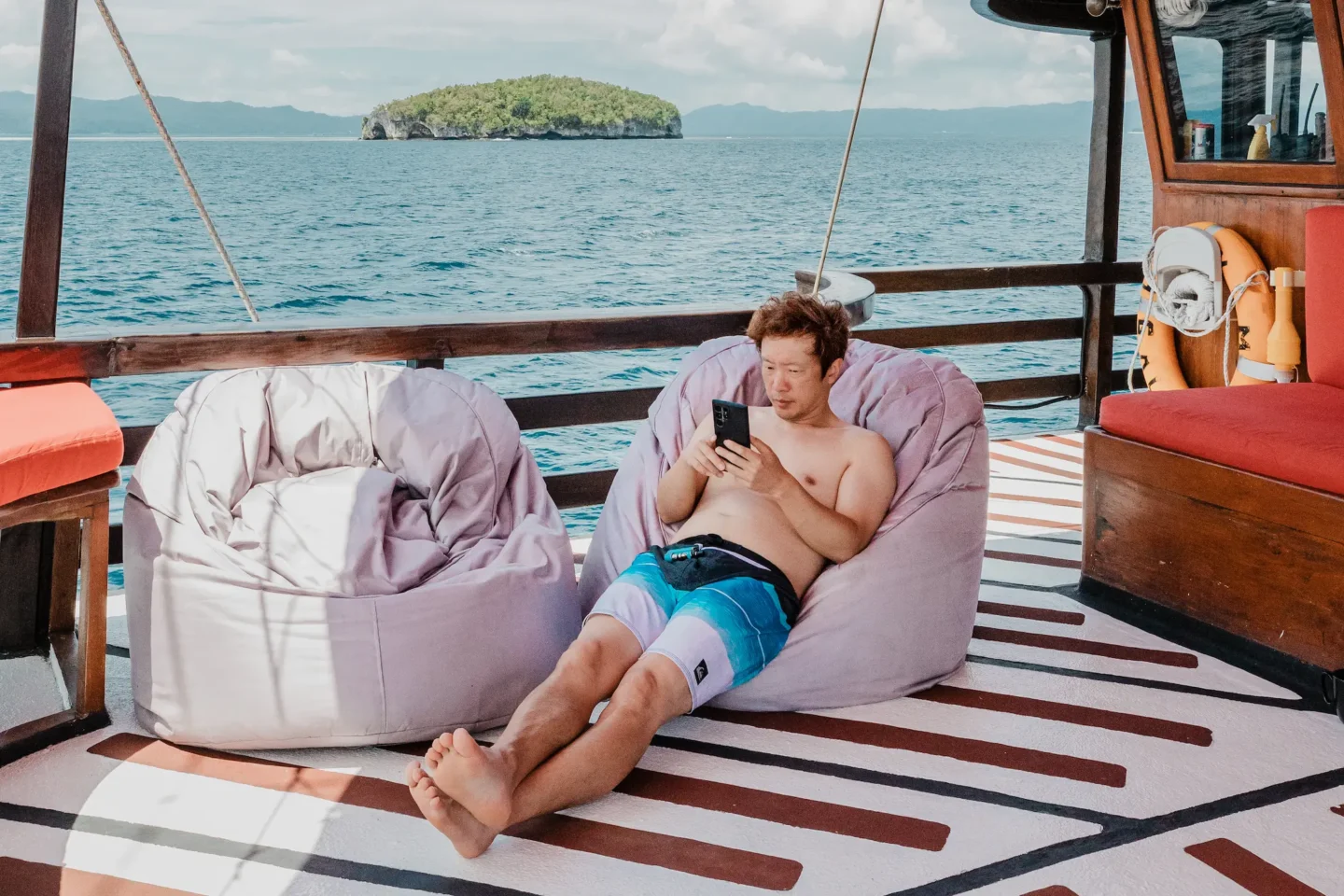
Labuan Bajo has 4G, most liveaboards do not. Bring a local SIM (get Telkomsel one). Onboard, La Galigo Liveaboard is equipped with high-speed Starlink satellite internet, providing reliable connectivity even in the remote expanses of Komodo.
Beyond the Park
Exploring Flores Island: Additional Attractions
Don’t skip Flores. Hike Kelimutu’s tri-colored lakes, explore traditional villages in Bajawa, or chase waterfalls near Ruteng. It’s raw, lush, and largely untouched.
Cultural Experiences: Local Villages and Traditions
Visit Wae Rebo, a mountain village shrouded in mist and mystery. Or spend a day in Melo Village and watch a whip dance that’ll rattle your bones.
Combining Komodo with Other Indonesian Destinations
Indonesia is an archipelago of dreams. Raja Ampat, Halmahera, Lembeh, Bali, Lombok, and the untouched Sangihe Archipelago, are some of the best of the best the archipelago has to offer.
Frequently Asked Questions
Is It Safe to Visit Komodo National Park?
Yes, if you follow the rules. Guides are trained, dragons are monitored, and most risks come from people ignoring instructions.
Do I need a guide to see the Komodo dragons?
Absolutely. Rangers are mandatory on Komodo and Rinca Islands for your safety.
Can I snorkel if I’m not a certified diver?
Yes! Komodo is a world-class snorkeling destination. Dive sites like Taka Makassar, Siaba Besar, and Manta Point offer shallow, vibrant reefs teeming with marine life, even if you’ve never strapped on a tank.
Do you include food and gear?
Yes to food, no to some gear. All La Galigo trips include full-board meals, snacks, coffee, tea, and drinking water. You’ll also get towels, toiletries, a dive guide, tanks, and weights as part of the package. However, dive gear is not included; you’ll need to bring your own or rent it onboard for an additional fee. Nitrox is also available at extra cost. Please let us know during your booking with us to make the requests.
Is there internet access in Komodo?
Mobile signal is patchy at best in the park. But La Galigo is equipped with Starlink high-speed satellite internet, so you can stay connected while still floating off the map.
How many dives will I do on a liveaboard trip?
It depends on the itinerary. For example, our Jurassic Komodo trip includes up to 16 dives, while Ultimate Komodo offers 20+ dives across 7 nights. Night dives are often included too.
How do I book a trip with La Galigo Liveaboard?
Easy. Head to trip.lagaligoliveaboard.com, choose your Komodo itinerary and departure, and book online. You can also reach us out directly for help with planning, availability, and special requests.

